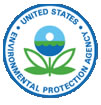- Home
- Public Employees Occupational Safety and Health
- PEOSH Health Standards
- New Jersey Indoor Air Quality Standard (N.J.A.C. 12:100-13)
New Jersey Indoor Air Quality Standard (N.J.A.C. 12:100-13)
Exposure to indoor contaminants represents one of the most wide-spread exposures affecting public employees. Contaminants generated indoors can be concentrated in indoor air by inadequate or improperly operating ventilation systems that do not provide enough dilution ventilation. Contaminants can also be introduced by construction/ renovation projects within the building or from exterior sources entering a building. Health effects caused poor indoor air quality can range from general malaise, such as fatigue and headache to more serious symptoms such as asthma and infections. Indoor air quality issues represent approximately 60% of the complaints investigated by PEOSH.
The New Jersey Indoor Air Quality standard, N.J.A.C. 12:100-13 (2007), sets standards for indoor air quality in existing buildings occupied by public employees during their regular working hours. The Indoor Air Quality Standard is one of the only state indoor air quality standards in the U.S.
The PEOSH has developed the following guidance resources to assist employers in complying with the requirements of the Indoor Air Quality Standard. Guidance documents can be downloaded individually or as part of the Public Employer's Guide and Model Written Program.
- PEOSH IAQ Standard
- PEOSH IAQ Standard Inspection Guidance Document
- Public Employer's Guide and Model Written Program
- Model Written IAQ Program
- Forms
- Training
- PEOSH IAQ Information Bulletins
- PEOSH IAQ Presentations
- PEOSH IAQ Standard, Public Employer's Guide, and Model
Name of Publication File Description PEOSH IAQ Standard [pdf 28k] The PEOSH Indoor Air Quality standard (N.J.A.C. 12:100-13) (2007). The standard applies to matters relating to indoor air quality in existing buildings occupied by public employees during their regular working hours. Public Employer's Guide and Model Written Program [pdf 149k] The IAQ Public Employer's Guide and Model Written Program is a comprehensive guidance document designed to assist public employers in complying with the requirements of the PEOSH IAQ standard (2007). The Model Written Program, sample checklists, and forms can be downloaded below in an editable format. Model Written IAQ Program [doc 53k]
[pdf 31k]The Model Written IAQ Program is provided to illustrate how to develop a written program. The format and content of the model program must be modified to reflect the specific ventilation system(s) and administrative policies at each building.
- PEOSH IAQ Standard Inspection Guidance Document
pdf 17k]- A protocol used by PEOSH staff when conducting indoor air quality investigations.
- Forms
Form Title File Description IAQ Inspection Checklist [pdf 25k]
[doc 149k]
The IAQ Inspection Checklist is provided to assist employers in understanding the requirements of the IAQ standard. Employers are encouraged to utilize this checklist to conduct a self-audit of their IAQ Compliance Program. This checklist is utilized by PEOSH compliance officers during IAQ inspections. Sample Preventive Maintenance Log [pdf 10k]
[doc 36k]
The Sample Preventive Maintenance Log is a sample of the basic format required under Section 13.6 of the IAQ standard. Copies of the completed log are required to be maintained for a period of three (3) years and must be available to PEOSH inspectors upon request. Sample Renovation/ Construction Project IAQ Compliance Checklist [pdf 17k]
[doc 40k]
The Sample Renovation /Construction Project IAQ Compliance Checklist is provided to assist employers in ensuring compliance with the IAQ standard during all phases of a renovation/construction project. Employers are encouraged to begin completing this checklist at the planning phase of a renovation/construction project. Completing this checklist will also serve as documentation of compliance with some requirements of the standard.
- Training
- Designated Person Training (PowerPoint presentation) [ppt 1m]
The NJ IAQ standard requires that employers designate and train a staff member to act as the Designated Person. PEOSH has developed this training presentation to satisfy this basic requirement.
- PEOSH IAQ Information Bulletins
- PEOSH Policy on Building Renovation [pdf 97k]
This information bulletin provides PEOSH’s enforcement perspective on this common and preventable occupational hazard. - Renovation & Construction in Schools - Controlling Health and Safety Hazards [pdf 123k]
Renovation and construction projects at schools are disruptive to the learning environment and present potential health hazards to students and staff. This information bulletin provides basic information to school districts that are planning a renovation or construction project when the building is occupied. - Common Hazards Found in Public in Schools
This information bulletin contains information on the common hazards found in schools. Topics covered include: roof renovation, painting and construction work, indoor air quality, carpeting, carcinogens, woodworking shops, science laboratories, darkroom-photo developing, art rooms- kilns, sculpturing and silk screen printing. - Indoor Bioaerosols [pdf 74k]
This information bulletin provides basic knowledge about bioaerosols, including mold and pollen.  Mold in the Workplace - Prevention and Control [pdf 102k]
Mold in the Workplace - Prevention and Control [pdf 102k]
This information bulletin provides advanced information on the identification and remediation of mold in the workplace. These guidelines should be utilized whenever the remediation of mold is planned
- PEOSH Policy on Building Renovation [pdf 97k]
- PEOSH IAQ Presentations
PEOSH IAQ Standard for Schools
- Part I -- PEOSH IAQ Standard Overview [pdf 5.5m]
- Part II -- IAQ for School Nurses [pdf 3.4m]
- State Agencies with Major Indoor Responsibilities for Public Buildings:
NJ Department of Health
Environmental and Occupational Health Assessment Program
The mission of the Program is to protect the health of the public by reducing residents and workers’ exposure to chemical, physical, and biological hazards including asbestos-containing materials, bloodborne pathogens, lead-based paint hazards, and many others. Additionally, the Program: - handles issues related to school construction, Brownfields redevelopment, and related activities
- administers federal grants including U.S. EPA Tools for Schools Program
- maintains a list of private mold consultants, laboratories, and remediation firms
- enforces the provisions of the PEOSH Hazard Communication standard, and
- maintains database of employer Right to Know annual surveys.
- NJ Department of Treasury
Office of Lease Compliance
State agency responsible for managing contracts on state leased buildings, liaison with property owner, coordinates building maintenance issues.
Office of Building Management and Operations
State agency responsible for overall management of state-owned buildings.
- U.S. Environmental Protection Agency (EPA) - IAQ Publications and Programs
 The EPA has major indoor air responsibility for public and commercial buildings and offer many programs and publications:
The EPA has major indoor air responsibility for public and commercial buildings and offer many programs and publications:
- Office of Radiation and Indoor Air Indoor Environments Division
Conducts a non-regulatory indoor air quality program that emphasizes research, information dissemination, technical guidance, and training. Issues regulations and carries out other activities that affect indoor air quality under the laws for pesticides, toxic substances, and drinking water. - IAQ Tools for Schools (TfS) Kit
The IAQ TfS Kit shows schools how to carry out a practical plan of action to improve indoor air problems at little or no cost using straightforward activities and in-house staff. The Kit provides best practices, industry guidelines, sample policies, and a sample IAQ management plan. The voluntary guidance can save schools and money so that resources can be directed toward educating children. The IAQ TfS Kit is co-sponsored by the National Parent Teacher Association, National Education Association, Association of School Business Officials, American Federation of Teachers, and the American Lung Association. - Healthy School Environments Assessment Tool
The Healthy School Environments Assessment Tool (SEAT) is a free software tool to help school systems manage more effectively their environmental issues. HealthySEAT is designed to be customized by school systems to conduct and manage self-assessments of their school facilities for a wide range of environmental, health, and safety issues. - IAQ Building Education and Assessment Model (I-BEAM)
I-BEAM is a guidance tool designed for use by building professionals and others interested in indoor air quality in commercial buildings. I-BEAM updates and expands EPA's Building Air Quality guidance and is designed to be a comprehensive state-of-the-art guidance for managing IAQ in commercial buildings. I-BEAM contains text, animation/visual, and interactive/calculation components that can be used to perform a number of diverse tasks. I-BEAM consists of many individual modules which explain different aspects of IAQ including how to manage, operate, and maintain your building for IAQ, and how to insure that your energy efficiency projects are compatible with IAQ. I-BEAM also contains modules that are interactive, allowing you to set up maintenance and housekeeping tasks for IAQ, and to calculate budgetary impacts of IAQ.  Building Air Quality: A Guide for Building Owners and Facility Managers (BAQ Guide) and the Building Air Quality Action Plan
Building Air Quality: A Guide for Building Owners and Facility Managers (BAQ Guide) and the Building Air Quality Action Plan
The BAQ Guide, developed by the EPA and the National Institute for Occupational Safety and Health (NIOSH), provides practical suggestions on preventing, identifying, and resolving indoor air quality problems in public and commercial buildings. This guidance provides information on factors affecting indoor air quality; describes how to develop an IAQ profile of building conditions and create an IAQ management plan; describes investigative strategies to identify causes of IAQ problems; and provides criteria for assessing alternative mitigation strategies, determining whether a problem has been resolved, and deciding whether to consult outside technical specialists.- Mold Remediation in Schools and Commercial Buildings
This document presents guidelines for the remediation/cleanup of mold and moisture problems in schools and commercial buildings; these guidelines include measures designed to protect the health of building occupants and remediators. It has been designed primarily for building managers, custodians, and others who are responsible for commercial building and school maintenance.
- Office of Radiation and Indoor Air Indoor Environments Division
- American Society of Heating Ventilation and Air-Conditioning Engineers (ASHRAE)
 ASHRAE advances the arts and sciences of heating, ventilation, air conditioning and refrigeration and establishes consensus standards for many aspects of the HVAC industry.
ASHRAE advances the arts and sciences of heating, ventilation, air conditioning and refrigeration and establishes consensus standards for many aspects of the HVAC industry.
ASHRAE Standards related to the NJ IAQ Standard:
- Standard 55-2004 - Thermal Environmental Conditions for Human Occupancy
Specifies environmental conditions that will produce acceptable thermal environmental conditions for 80% or more of the occupants. - Standard 62.1-2004 - Ventilation for Acceptable Indoor Air Quality
Specifies minimum ventilation rates for indoor air quality that will be acceptable to human occupants and minimize adverse health effects.
- Standard 55-2004 - Thermal Environmental Conditions for Human Occupancy
- Other Resources for School
NJDOH Healthy School Facility Environments
A gateway to resources to help address environmental health issues in schools such as indoor air quality, mold contamination, hazardous substances, and construction dust and noise. Features links to the resources of six New Jersey state agencies, federal agencies, and many advocacy groups.
National Clearinghouse for Educational Facilities (National Institute of Building Sciences)
Information on planning, designing, building, and maintaining safe, healthy, high performance schools. Funded by a grant from the U.S. Department of Education.


